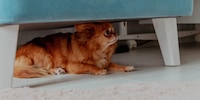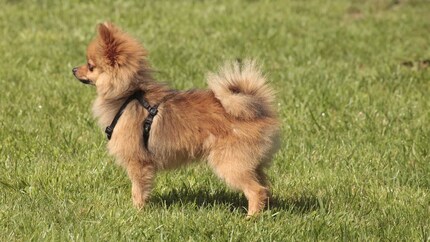
Guide
New Year's Eve with a dog: how to avoid a nervous breakdown
by Anne Fischer

Not only did my four-legged friend Finn learn something on the young dog course, but I did too. I don't want to withhold my four most important learnings from you.
Your four-legged friend is a puppy until the 18th week. After that, it's ready for dog school. Unfortunately, attendance is not compulsory in Switzerland. At least not for all breeds. Much to my chagrin. Because I believe that every dog should attend a course - regardless of their stature. After all, it's not just your furry friend who learns something for life, but the owner too. Back to the actual topic.
I became a proud dog owner for the first time last year. It was clear to me from the start that I wouldn't treat him like an accessory or a baby, despite his size. That's why there was no question in my mind as to whether or not I would attend dog training. After all, I could also benefit from it. I would like to share the four most important lessons I learnt with you.
Dogs are loyal companions. To keep them that way, you need to build a bond with them. You can do this by spending a lot of time with your four-legged friend. This means playing, cuddling, going for walks and everything else that goes with it. They need to know that they can rely on you. Of course, he also finds you exciting when you have food in your hand. The aim is to achieve this even without treats.
This brings us to the second point. If you want your furry friend to obey you, you need their attention. You can get this by making eye contact with him. With my dog Finn, it works best if I call his name, not too loudly but firmly, and raise my index finger. Now I look directly into his beady eyes. My finger remains at eye level until I have his full concentration. As soon as this is the case, I say "Sit" firmly and we are ready for training or whatever. In the initial phase, treats are part of this, but you can gradually do away with them.

You are the boss or pack leader. Your four-legged friend needs to know this right from the start. That's why you get something between his teeth first. Only then is it his turn. The same applies to entering front doors. You go in first, then your ball of fur enters the room. When I come home from work and my dog is waiting for me, I have to greet my partner first and then him. Admittedly, this is particularly difficult in the initial phase, as Finn is the first to stand in front of me when I open the front door and wags his tail happily. As hard as it may sound: jump over your shadow and ignore your four-legged friend. This is an important step in the training process. Also ask your visitor to say hello to you first and then to your dog.
Your dog is a repeat offender. If you let him get away with something once, he will try it again. In other words, if you give him something edible from the table once, he will try it again and keep on begging. So don't even start. Even if he looks at you with his big beady eyes. Don't pay any attention to him, even if he gets pushy and wants to come up to you by the leg. Try to eat undisturbed. It won't be easy at first, but it will get easier and easier.
When I’m not exploring the depths of the sea as an open water diver, I enjoy plunging into the world of fashion. On the streets of Paris, Milan and New York is where I keep my eyes peeled for the latest trends. And I’ll show you how to take them from the catwalk to your everyday life.
Practical solutions for everyday problems with technology, household hacks and much more.
Show all